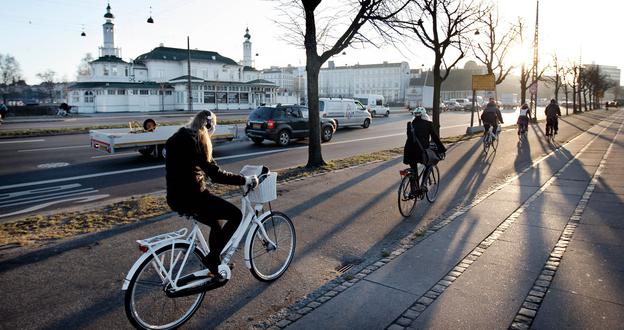What Copenhagen can teach the world

Cyclists bike down path in the center of Copenhagen, Denmark. (Associated Press)
Copenhagen frequently tops rankings of the world’s happiest, most liveable and best-designed cities.
This is likely because the city strives for sustainability in nearly every aspect of policy and culture. While Denmark’s capital may not be perfect, its successes in a few key areas provide teaching points for metropolises around the world.
Work/life balance
Family is central to Danish life. According to BBC News, parents typically receive an entire year of maternity/paternity leave (which can be spread out over nine years), half fully paid and half up to 90% paid. In addition, government subsidies often cover 75% of pre-kindergarten childcare costs and the majority of education and healthcare. Culturally, BBC News adds, there is little pressure to work overtime, leaving people more time to spend with their families.
While all of this leads to much higher taxes (Denmark has the highest income tax in the world), Danes are willing to bear the cost since, studies show, they have a high degree of trust in their government.
Infrastructure
The importance of liveability in Danish culture is exemplified in the sustainable infrastructure of its capital city. Copenhagen is friendly to pedestrians, and perhaps even friendlier to cyclists. Nearly 35,000 people (40% of residents) commute by bike each day, causing some to call Copenhagen the number one cycling city in the world. The city’s bike-sharing program, Bycyklen København, provides bikes to locals and visitors for free, and Copenhagen has a network of about 350km of off-road bike paths, complete with traffic lights. Plus, there’s the S-tog commuter train, the Metro and an extensive bus system.
Residents usually prefer to cycle or take public transport since there are deterrents to driving in Denmark – namely, some of the highest petrol prices in the world and a petrol tax of about 4 Danish kroner per litre.
Sustainable architecture is also central to city policy. Most new buildings, for example, are required to have roofs covered with plants and vegetation, and most old buildings have been retrofitted to meet these standards. Green roofs reduce storm water runoff and help control the building’s interior climate, reducing both utility costs and greenhouse gas emissions. In addition city plans say that by 2015, 90% of residents will be able to walk to a green space in just 15 minutes.
Copenhagen is also trying to diversify its energy portfolio, purchasing some wind energy, for instance, from the nearby Danish island of Samsø. Samsø is an inspiration for Denmark’s capital, as it is an entirely carbon-neutral island that produces 100% of its electricity with wind power.
As Copenhagen itself strives to be carbon-neutral itself by 2025, sustainable economic growth remains a major concern. To address the challenge of merging environmental and economic goals, Copenhagen will host the Global Green Growth Forum, an annual summit of 200 world leaders, this October.
Science and technology
The city’s many research companies are being joined by thriving medical technology and communications technology sectors, all big job creators, according to the German news source Der Spiegel. The broader entrepreneurial tech sector is flourishing as well. Copenhagen is turning into a major startup city, which some attribute to its commitment to design and its culture of collaboration. The city hosts many events to support entrepreneurs, such as startup “bootcamps” and competitions for seed funding.
Indulgence
One of the biggest contributing factors to Copenhagen’s happiness and liveability is purely cultural: Copenhageners know how to have a good time while also taking care of the environment. Copenhagen consumes more organic food than any other place in Europe, is home to more breweries per capita than anywhere else in Europe (many of which are organic), and also has more Michelin stars than any other Scandinavian city – 14 to be exact. Leading the city’s recent food and drink renaissance, is Noma, a local food-obsessed establishment named the world’s best restaurant two years in a row.
Mixology is also blossoming in Copenhagen, with craft cocktail professionals promoting inventive concoctions beyond just beer.

Leave your comment on this story